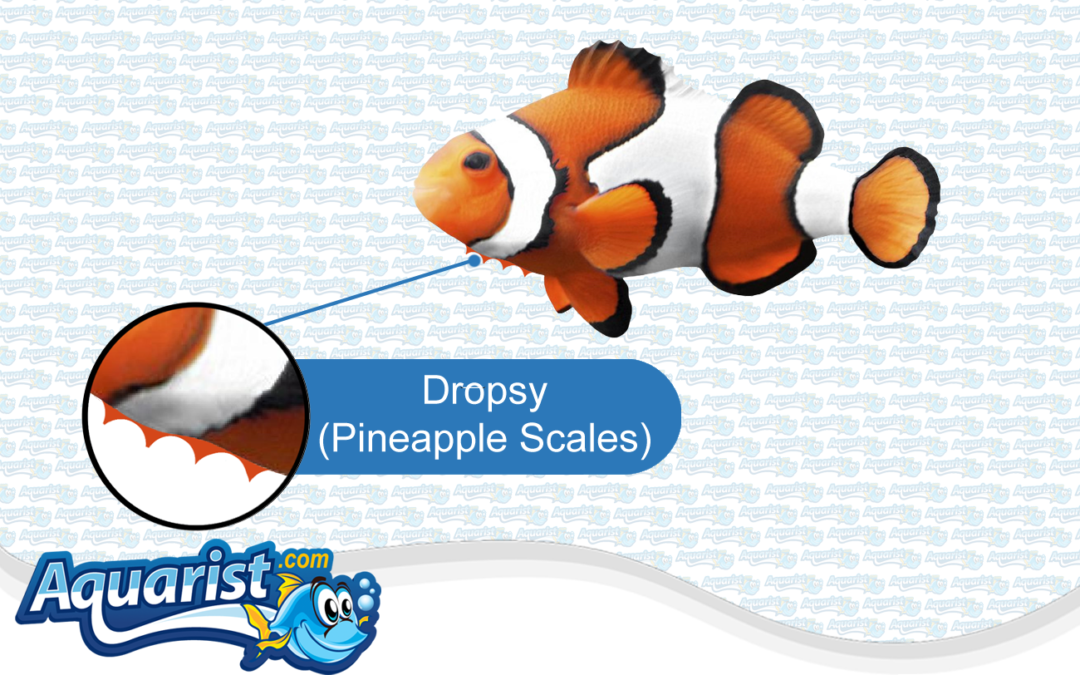Comprehensive Guide to Saltwater Fish Diseases: Dropsy
Dropsy is a serious condition in saltwater fish characterized by extreme swelling of the abdomen, often accompanied by raised scales. It is not a disease itself but a symptom of an underlying issue, usually linked to bacterial infections, organ failure, or poor water quality. Dropsy can be fatal if not treated promptly, making early detection and intervention crucial. This guide provides a detailed overview of dropsy in saltwater fish, covering its causes, symptoms, treatment options, and preventive measures to help you effectively manage this condition in your aquarium.
What is Dropsy?
Dropsy is a condition where a fish's body becomes swollen due to fluid accumulation. It is often a sign of internal problems such as kidney dysfunction, bacterial infection, or liver disease. The condition is usually associated with compromised osmotic regulation, where the fish's ability to balance fluids within its body is impaired, leading to edema. Dropsy can affect various fish species and may occur suddenly or develop over time.
Causes of Dropsy
Dropsy is often the result of an underlying health problem, and several factors can contribute to its development:
- Bacterial infections: Bacterial pathogens, particularly Aeromonas, can infect the internal organs and cause fluid buildup.
- Poor water quality: High levels of ammonia, nitrite, or nitrate can stress fish and compromise their immune systems, making them more susceptible to infections.
- Internal organ failure: Conditions like kidney or liver failure can disrupt the fish's ability to regulate fluids, leading to dropsy.
- Parasitic infestations: Internal parasites can damage organs, impairing fluid balance and contributing to the development of dropsy.
- Stress: Factors such as overcrowding, aggressive tank mates, or sudden changes in water conditions can weaken the immune system, increasing the risk of dropsy.
Symptoms of Dropsy
Identifying the symptoms of dropsy early is essential for effective treatment. Common signs include:
- Swollen or bloated abdomen: The most obvious symptom is a noticeably distended belly, often accompanied by a rounded body shape.
- Raised scales: As the swelling increases, the fish's scales may protrude, giving a pinecone-like appearance.
- Protruding eyes: In some cases, the eyes may bulge due to fluid buildup.
- Lethargy: Fish with dropsy may become less active, swim sluggishly, or remain at the bottom of the tank.
- Loss of appetite: Affected fish may refuse to eat or show a significant reduction in feeding behavior.
- Reddened or pale gills: The gills may appear discolored, indicating poor oxygenation or infection.
Treatment Options for Dropsy
Treating dropsy requires addressing the underlying cause, improving water quality, and providing supportive care. The following steps can help manage and treat dropsy effectively:
- Quarantine affected fish: Isolate the fish in a separate quarantine tank to prevent the spread of potential infections and provide a controlled environment for treatment.
- Improve water quality: Perform frequent water changes and test water parameters to ensure optimal conditions. Ammonia, nitrite, and nitrate levels should be kept as close to zero as possible.
- Use antibacterial medications: Treat the fish with broad-spectrum antibiotics such as kanamycin or erythromycin, which can help combat bacterial infections.
- Add aquarium salt: Slightly increasing the salinity of the quarantine tank (1-2 tablespoons per 5 gallons) can help reduce osmotic stress and support the fish's recovery.
- Feed high-quality, vitamin-enriched foods: Providing a nutritious diet with added vitamins can help boost the fish's immune system and promote healing.
- Maintain stable tank conditions: Avoid sudden changes in temperature, pH, or salinity to reduce stress on the fish.
Preventing Dropsy
Prevention is the best approach to managing dropsy in saltwater fish. The following steps can help reduce the risk of this condition:
- Maintain optimal water quality: Regularly test and monitor water parameters, including ammonia, nitrite, nitrate, and pH levels. Perform routine water changes to keep the tank clean and healthy.
- Quarantine new fish: Always quarantine new fish for at least 2-4 weeks before introducing them to the main tank. This helps prevent the introduction of diseases and parasites.
- Feed a balanced diet: Provide a varied diet that includes high-quality foods, live or frozen foods, and vitamin supplements to boost the immune system.
- Avoid overcrowding: Keep the tank population at a level appropriate for its size to reduce stress and aggression among fish.
- Monitor for early signs of disease: Regularly observe your fish for any symptoms of illness or abnormal behavior. Early intervention can prevent minor issues from developing into severe conditions like dropsy.
Pro Tips for Treating and Preventing Dropsy
- Act quickly: Dropsy can be a sign of serious internal issues. Early intervention is crucial for a better chance of recovery.
- Monitor water quality closely: Poor water conditions can exacerbate dropsy. Regularly check water parameters and make necessary adjustments.
- Use natural remedies cautiously: Products like Melafix or aquarium salt can help reduce stress and inflammation, but they should be used as supportive measures, not replacements for antibiotics.
- Disinfect equipment: After treating an infected fish, thoroughly clean and disinfect any equipment used in the quarantine tank to prevent the spread of pathogens.
Common Mistakes to Avoid When Treating Dropsy
To ensure effective treatment and avoid complications, be mindful of these common mistakes:
- Stopping treatment too early: Even if symptoms appear to improve, continue the full course of treatment to ensure that the underlying infection is eradicated.
- Overusing medications: Avoid using multiple treatments simultaneously without expert guidance, as this can stress the fish and harm beneficial bacteria in the tank.
- Not addressing underlying stressors: Simply treating the symptoms without addressing poor water quality or other stress factors may lead to recurring issues.
- Skipping quarantine for new fish: Introducing new fish without quarantine can lead to the spread of diseases and increase the risk of dropsy outbreaks.
Understanding the Impact of Dropsy on Fish Health
Dropsy is often a symptom of a serious underlying condition, such as organ failure or bacterial infection, and can be life-threatening if not treated promptly. The swelling and fluid buildup associated with dropsy can cause significant stress, discomfort, and damage to internal organs. Proper diagnosis, timely treatment, and preventive measures are essential for managing dropsy and ensuring the long-term health of your saltwater fish.
Conclusion
Dropsy is a challenging condition that can be fatal if left untreated. By recognizing the symptoms early, understanding the causes, and taking appropriate treatment and preventive measures, you can improve the chances of recovery for affected fish. Maintaining optimal water quality, providing a nutritious diet, and minimizing stress are key steps in preventing dropsy. With proper care and timely intervention, you can help ensure the health and well-being of your saltwater fish.

